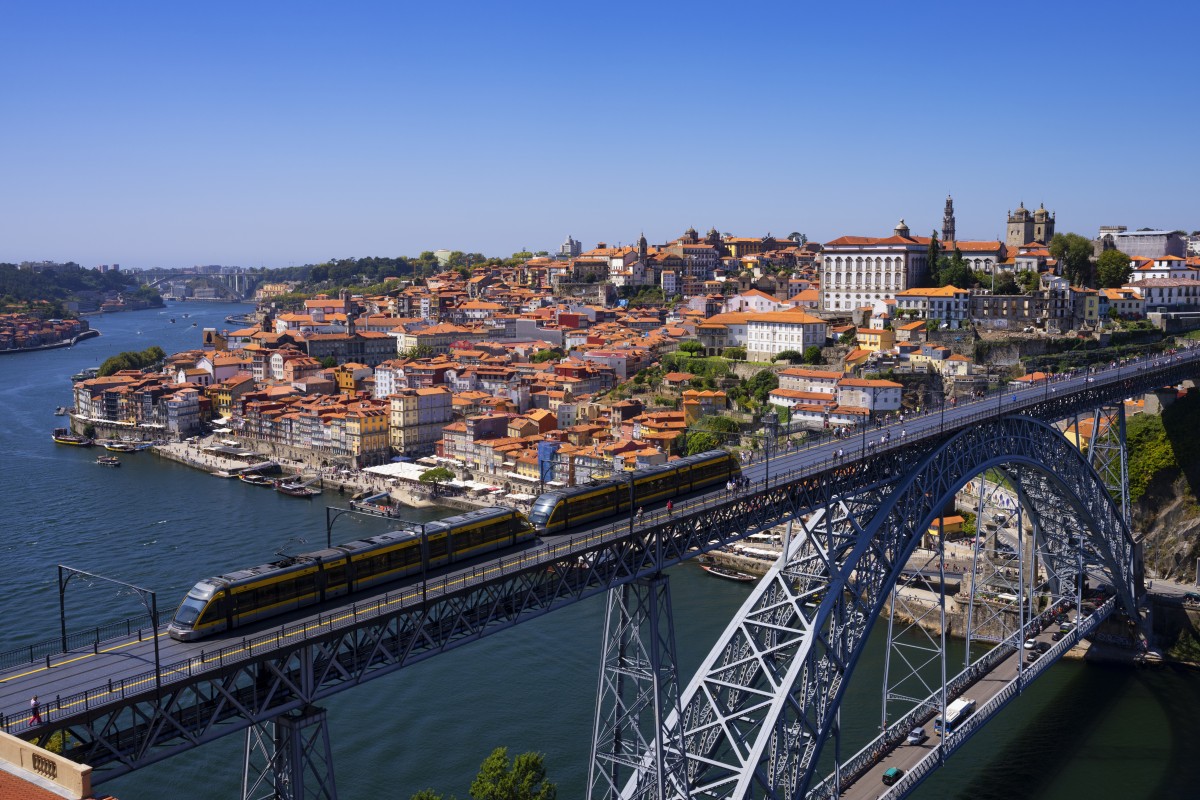
House sales in Portugal are set to cool in 2023. And the reduction in demand, motivated by the loss of purchasing power due to high inflation, as well as the rise in interest rates on housing loans, helps explain why house prices in Portugal have been stabilising for at least four months in a row, including October. But looking at the country in detail, there were eight district capitals where house prices fell, including Porto (-0.5%), according to Idealista's price index. On the other hand, houses are still more expensive in nine major cities, with Guarda leading the way (4.3%).
Once again, house prices in Portugal stabilised in October compared to the previous month (0.3%). But they were up 4.8% on the same period last year. After all, how much does it cost to buy a house in our country? The median price stood at 2,500 euros per square metre (€/m2) at the end of October this year, according to idealista's price index. What also stands out is that the monthly variation in house prices is not homogeneous at a national level.

House prices up 1% in Lisbon - but down 0.5% in Porto
With regard to the monthly evolution of house prices, the national reality is divided: there were eight district capitals where houses became cheaper between September and October, three where prices stabilised and nine large cities where houses became more expensive.
Leading the house price falls was Vila Real (-3.5%), followed by Setúbal (-1.2%), Évora (-1.1%), Ponta Delgada (-1.1%), Viana do Castelo (-0.9%), Faro (-0.7%), Porto (-0.5%) and Coimbra (-0.5%). And it was in Beja (0.4%), Aveiro (0.3%) and Braga (0.1%) where house prices for sale remained stable in this period.
On the other hand, house prices in October rose compared to the previous month in Guarda (4.3%), Castelo Branco (3.9%), Portalegre (3.4%), Santarém (1.8%), Bragança (1.7%), Leiria (1.4%), Funchal (1.1%), Lisbon (1%) and Viseu (1%).
Lisbon is still the most expensive city in which to buy a house: 5,401 €/m2. Porto (3,392 €/m2) and Funchal (3,105 €/m2) are in second and third place respectively. Next are Faro (2,918 €/m2), Aveiro (2,411 €/m2), Setúbal (2,265 €/m2), Évora (2,003 €/m2), Coimbra (1,827 €/m2), Viana do Castelo (1,805 €/m2), Braga (1,748 €/m2), Ponta Delgada (1,747 €/m2), Viseu (1,388 €/m2) and Leiria (1,353 €/m2).
The cheapest cities to buy a house are Portalegre (747 €/m2), Guarda (830 €/m2), Castelo Branco (844 €/m2), Beja (941 €/m2), Bragança (952 €/m2), Santarém (1,172 €/m2) and Vila Real (1,183 €/m2).
Price of houses to buy by district capital

Houses for sale continued to rise in 12 districts and islands
Analysing by districts and islands, it can be seen that the largest share of territories (12 of the 25 analysed) continue to feel that homes to buy are becoming more expensive. The biggest price rises took place on the island of São Jorge (6.3%), Guarda (3.7%) and the island of Pico (3.5%). This was followed by Madeira Island (2.2%), Aveiro (1.2%), Castelo Branco (1.1%), Bragança (0.9%), São Miguel Island (0.9%), Faial Island (0.7%), Santarém (0.6%), Lisbon (0.5%) and Vila Real (0.5%).
On the other hand, house prices for sale fell in 7 Portuguese districts and islands, namely Évora (-6.6%), Portalegre (-3.3%), Viana do Castelo (-0.9%), Viseu (-0.9%), Beja (-0.8%), Coimbra (-0.6%) and Terceira island (-0.5%). It should also be noted that house prices remained stable during this period in Setúbal (0.4%), Faro (0.3%), Porto (0.2%), the island of Porto Santo (0.2%), Leiria (0%) and Braga (-0.2%).
As you might expect, the ranking of the most expensive districts to buy a house is led by Lisbon (3,841 €/m2), followed by Faro (3,200 €/m2), Madeira island (2,782 €/m2), Setúbal (2,463 €/m2), Porto (2,450 €/m2), Porto Santo island (2,043 €/m2), Aveiro (1,644 €/m2), São Miguel island (1.579 €/m2), Leiria (1,525 €/m2), Braga (1,511 €/m2), Viana do Castelo (1,406 €/m2), Pico Island (1,360 €/m2), Coimbra (1,358 €/m2), Faial Island (1.276 €/m2), Évora (1,251 €/m2), São Jorge island (1,125 €/m2), Terceira island (1,124 €/m2) and Santarém (1,094 €/m2).
The cheapest prices to buy a house are in Portalegre (667 €/m2), Guarda (691 €/m2), Castelo Branco (771 €/m2), Bragança (874 €/m2), Vila Real (962 €/m2), Viseu (1.033 €/m2) and Beja (1,047 €/m2), according to the idealista price index.
Houses get more expensive in Madeira and the Azores - and beyond
During October, house prices for sale rose in four regions of the country and remained stable in two: the Algarve (0.3%) and the Centre (0.4%). Leading the increases was the Autonomous Region of Madeira (2.2%), followed by the Autonomous Region of the Azores (1%), the Lisbon Metropolitan Area (0.6%) and the North (0.5%). The only region where house prices fell between September and October was the Alentejo (-3.1%).
The Lisbon Metropolitan Area, at 3,503 €/m2, continues to be the most expensive region in which to buy a house, followed by the Algarve (3,200 €/m2), the Autonomous Region of Madeira (2,770 €/m2) and the North (2,054 €/m2). On the opposite side of the table are the Centre (1,367 €/m2), the Autonomous Region of the Azores (1,390 €/m2) and the Alentejo (1,497 €/m2), which are the cheapest regions to buy a house.

idealista's property price index
To create the idealist's property price index, the offer prices (based on the square metres built) published by the idealist's advertisers are analysed. Atypical adverts and those with out-of-market prices are eliminated from the statistics.
We have also included the "family house" category and discarded all the adverts in our database that have not been interacted with by users for some time. The final result is obtained from the median of all the valid adverts in each market.